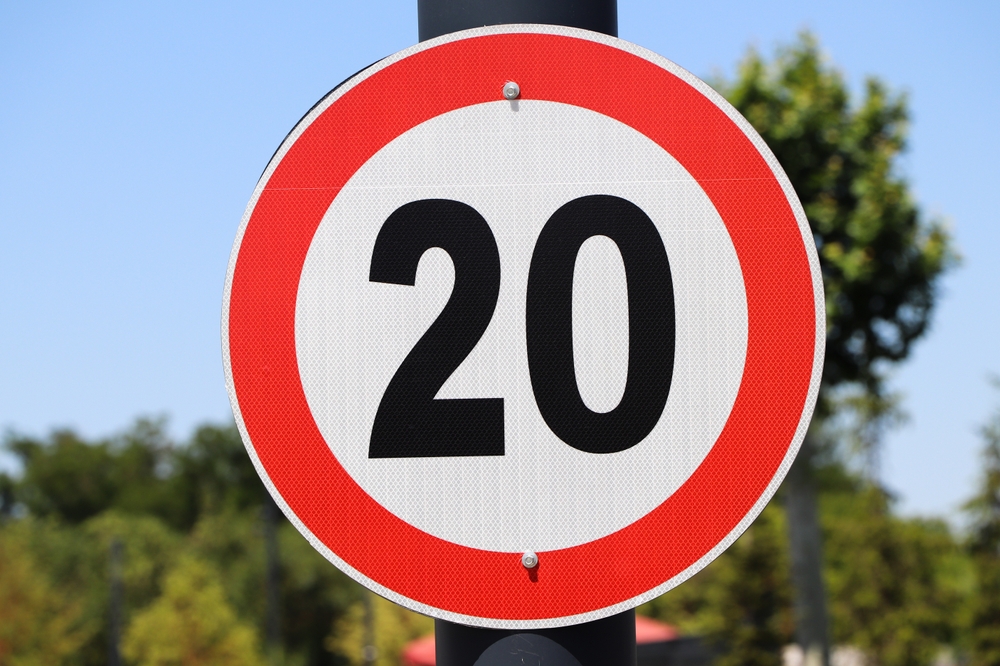
When you think about it, drivers must be able to read and drive all the time. With so many road signs posted, it’s virtually impossible to just focus on driving and the cars in front of you. However, beyond billboards and other distractions, these signs serve a particular purpose – to keep everyone safe.
Regulatory signs are highly common in residential and high-speed areas, but what are they, and why are they so important? Let’s break down this kind of signage and look at the four most common types of regulatory signs on the road.
What is a Regulatory Sign?
According to the Manual of Uniform Traffic Control Devices (MUTCD), “regulatory signs shall be used to inform road users of selected traffic laws or regulations and indicate the applicability of the legal requirements.”
These signs tell drivers where they can (and can’t) go and the speed they can drive at any given time. The term stems from these signs being based on local laws and regulations. So, if the regulations change, the signs will too.
What are the Four Most Common Regulatory Signs?
There are quite a few regulatory signs around the United States, but four are far more prevalent than the rest. Here’s a breakdown of each sign and what it does:
Stop Sign
This red octagonal sign is virtually everywhere, from sparsely populated rural areas to densely populated city streets. Even freeways on and off-ramps use stop signs to warn drivers to stop, yield, and pay attention to other cars on the road.
Although the primary purpose of this sign is to get the driver to stop, the reason behind it is that other cars have the right of way. For example, at an intersection, one street may not have a stop sign, meaning that all cross streets will need these signs to notify drivers that they must yield.
A stop sign is octagonal with a red background and white lettering.
Speed Limit Sign
Speed limits are necessary to control traffic flow and help prevent collisions, particularly on highways and major thoroughfares. The exact limits depend on the city, county, or state where the driver is located. For example, in Oregon, the maximum speed limit is 65 miles per hour, while in many other states, the limit is 70 mph.
Speed limits can also be based on one’s location. For example, the maximum limit for a residential district is 25 mph, while it’s 55 mph in a commercial area. Each location sets its own limits based on traffic conditions and other variables.
The speed limit sign is rectangular with a white background and black lettering. Even if the letters MPH are not listed, all speed limits in the United States are shown as miles per hour.
No Turn Sign
No-turn signs can come in a few varieties, including no right turn, no left turn, and no U-turn. These signs help prevent cars from disrupting traffic or going the wrong way down a one-way street. Sometimes, these signs may say “no turn,” or they just have an arrow with a prohibition icon.
No-turn signs are typically square or rectangular with a white background and black lettering. The prohibition icon is always in red for better visibility.
One Way Sign
One-way streets are sometimes necessary because it’s not feasible to allow two lanes of traffic. This sign may be needed because of a divided street or highway in other cases. Also, some cities utilize one-way streets to facilitate better traffic control and alleviate congestion.
These signs are imperative because they notify drivers where and how they can move with the flow of cars. In many cases, a one-way street sign may be accompanied by a no-turn sign to illustrate that a driver can only turn one way if merging into traffic. These signs can also help drivers look the correct way when crossing a one-way road.
One-way signs are either white with black lettering or black with a white arrow and black letters inside the arrow.
Other Examples of Regulatory Signs
Although we’ve covered the top four regulatory signs, many others can be utilized within a city or county. Some other common examples can include:
- Yield – These signs are common around on and off-ramps next to the freeway but can also be used for major thoroughfares. The purpose of the sign is to notify drivers that they don’t have to stop (and, in some cases, shouldn’t stop), but they must be aware of other cars. This sign is a downward equilateral triangle with a red border, white interior, and red lettering.
- Do Not Enter – This sign helps prevent vehicles from entering a street the wrong way or going onto a private road. The sign has a red circle with a white rectangle symbol and white lettering.
- No Parking – In large cities, parking can be in short supply, so these signs are necessary. Otherwise, drivers could make it harder for traffic to flow or block entrances and exits to buildings and loading docks. This kind of sign is also valuable because it can help generate revenue for the city from violators.
Why are Regulatory Signs So Vital?
Although drivers must take a test to receive their license, it’s unrealistic to expect them to memorize all the various road rules. Regulatory signs can ease this burden by notifying drivers of different conditions, so they can keep themselves and others safe. Collisions would be far more common without these signs, leading to more hospital visits and unsafe roads.
Get High-Quality Regulatory Signs from Worksafe Traffic Control Industries
Worksafe Traffic Control Industries has years of experience creating high-quality road signs for cities and municipalities in the United States. We ensure all of our signs are MUTCD compliant and offer fast, seven-day turnaround times on orders. When you need signage for your area, call Worksafe Traffic Control Industries first!

